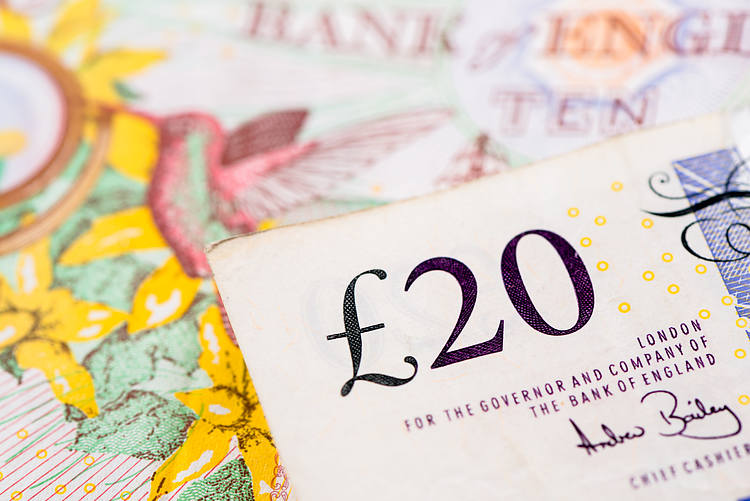- GBP/USD remains close to a one-month low touched last week amid a bullish USD.
- Bets for a less aggressive Fed policy easing and geopolitical risks underpin the buck.
- Expectations for a faster BoE rate-cutting cycle weigh the GBP and favor bears.
The GBP/USD pair struggles to capitalize on modest recovery gains registered over the past two days and oscillates in a narrow range, around the 1.3050-1.3045 region during the Asian session on Monday. Spot prices remain well within striking distance of a one-month low touched last Thursday and seem vulnerable to prolong the recent retracement slide from the 1.3435 area, or the highest level since March 2022.
A surprise fall in the UK Consumer Price Index (CPI) to the lowest level since April 2021 and below the Bank of England’s (BoE) 2% target lifted bets for a 25 basis point (bps) interest rate cut at the November 7 meeting. Furthermore, the money markets are pricing in the possibility of another BoE rate cut in December, which might continue to undermine the British Pound (GBP). This, along with the underlying bullish sentiment surrounding the US Dollar (USD) validates the negative outlook for the GBP/USD pair.
The USD Index (DXY), which tracks the Greenback against a basket of currencies, kicks off the new week on a positive note and for now, seems to have stalled its modest pullback from its highest level since early August touched last week. Growing market conviction that the Federal Reserve (Fed) will proceed with modest rate cuts over the next year keep the US Treasury bond yields elevated and act as a tailwind for the buck. Apart from this, geopolitical risks turn out to be another factor underpinning the safe-haven USD.
In the absence of any relevant market-moving economic releases, either from the UK or the US, the aforementioned fundamental backdrop suggests that the path of least resistance for the GBP/USD pair is to the downside. Hence, any intraday move-up could be seen as a selling opportunity. Bearish traders, however, might wait for acceptance below the 1.3000 psychological mark before placing fresh bets and positioning for a slide towards the 100-day Simple Moving Average (SMA) support, currently near the 1.2960 region.
Pound Sterling FAQs
The Pound Sterling (GBP) is the oldest currency in the world (886 AD) and the official currency of the United Kingdom. It is the fourth most traded unit for foreign exchange (FX) in the world, accounting for 12% of all transactions, averaging $630 billion a day, according to 2022 data. Its key trading pairs are GBP/USD, also known as ‘Cable’, which accounts for 11% of FX, GBP/JPY, or the ‘Dragon’ as it is known by traders (3%), and EUR/GBP (2%). The Pound Sterling is issued by the Bank of England (BoE).
The single most important factor influencing the value of the Pound Sterling is monetary policy decided by the Bank of England. The BoE bases its decisions on whether it has achieved its primary goal of “price stability” – a steady inflation rate of around 2%. Its primary tool for achieving this is the adjustment of interest rates. When inflation is too high, the BoE will try to rein it in by raising interest rates, making it more expensive for people and businesses to access credit. This is generally positive for GBP, as higher interest rates make the UK a more attractive place for global investors to park their money. When inflation falls too low it is a sign economic growth is slowing. In this scenario, the BoE will consider lowering interest rates to cheapen credit so businesses will borrow more to invest in growth-generating projects.
Data releases gauge the health of the economy and can impact the value of the Pound Sterling. Indicators such as GDP, Manufacturing and Services PMIs, and employment can all influence the direction of the GBP. A strong economy is good for Sterling. Not only does it attract more foreign investment but it may encourage the BoE to put up interest rates, which will directly strengthen GBP. Otherwise, if economic data is weak, the Pound Sterling is likely to fall.
Another significant data release for the Pound Sterling is the Trade Balance. This indicator measures the difference between what a country earns from its exports and what it spends on imports over a given period. If a country produces highly sought-after exports, its currency will benefit purely from the extra demand created from foreign buyers seeking to purchase these goods. Therefore, a positive net Trade Balance strengthens a currency and vice versa for a negative balance.
Read the full article here

